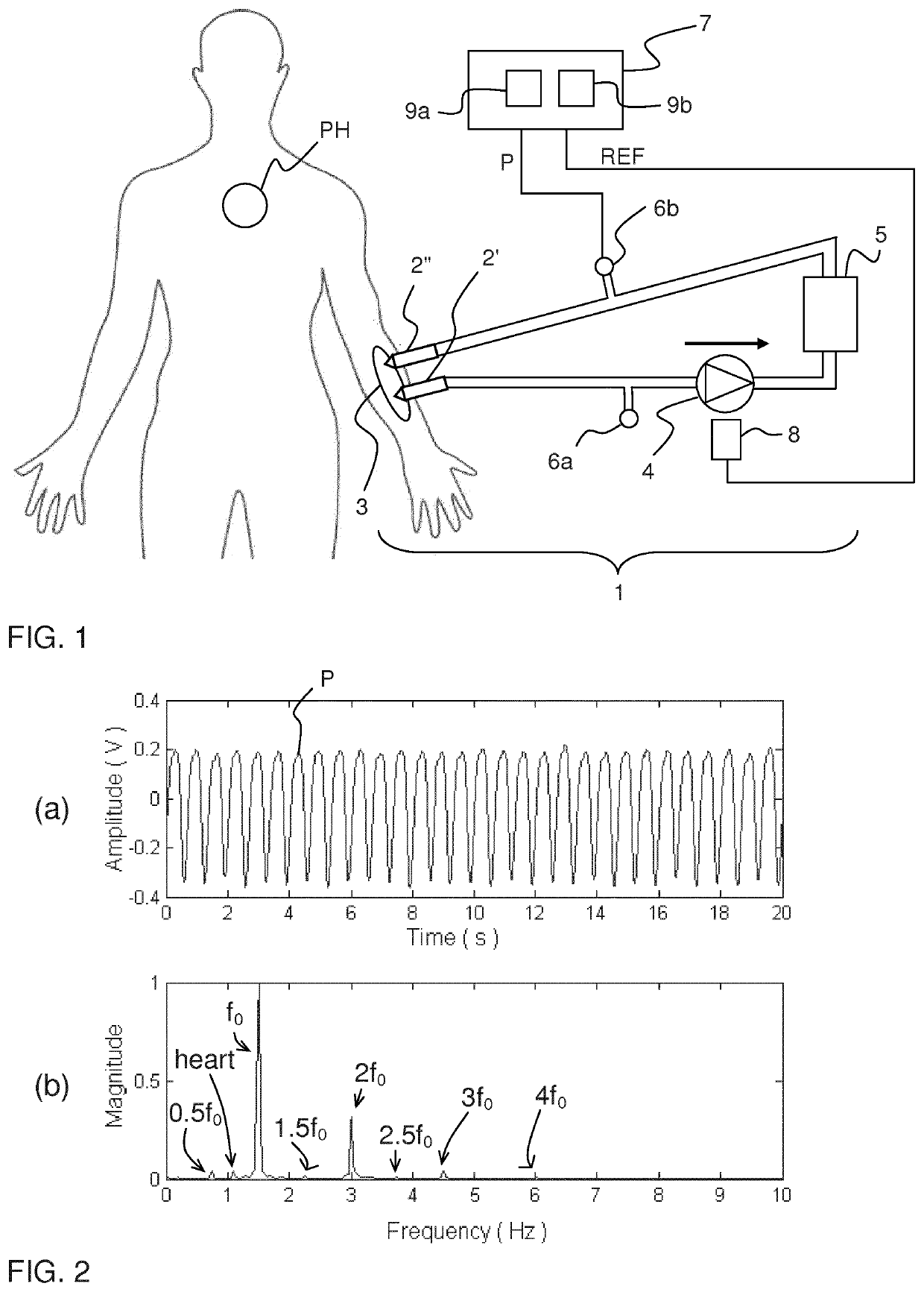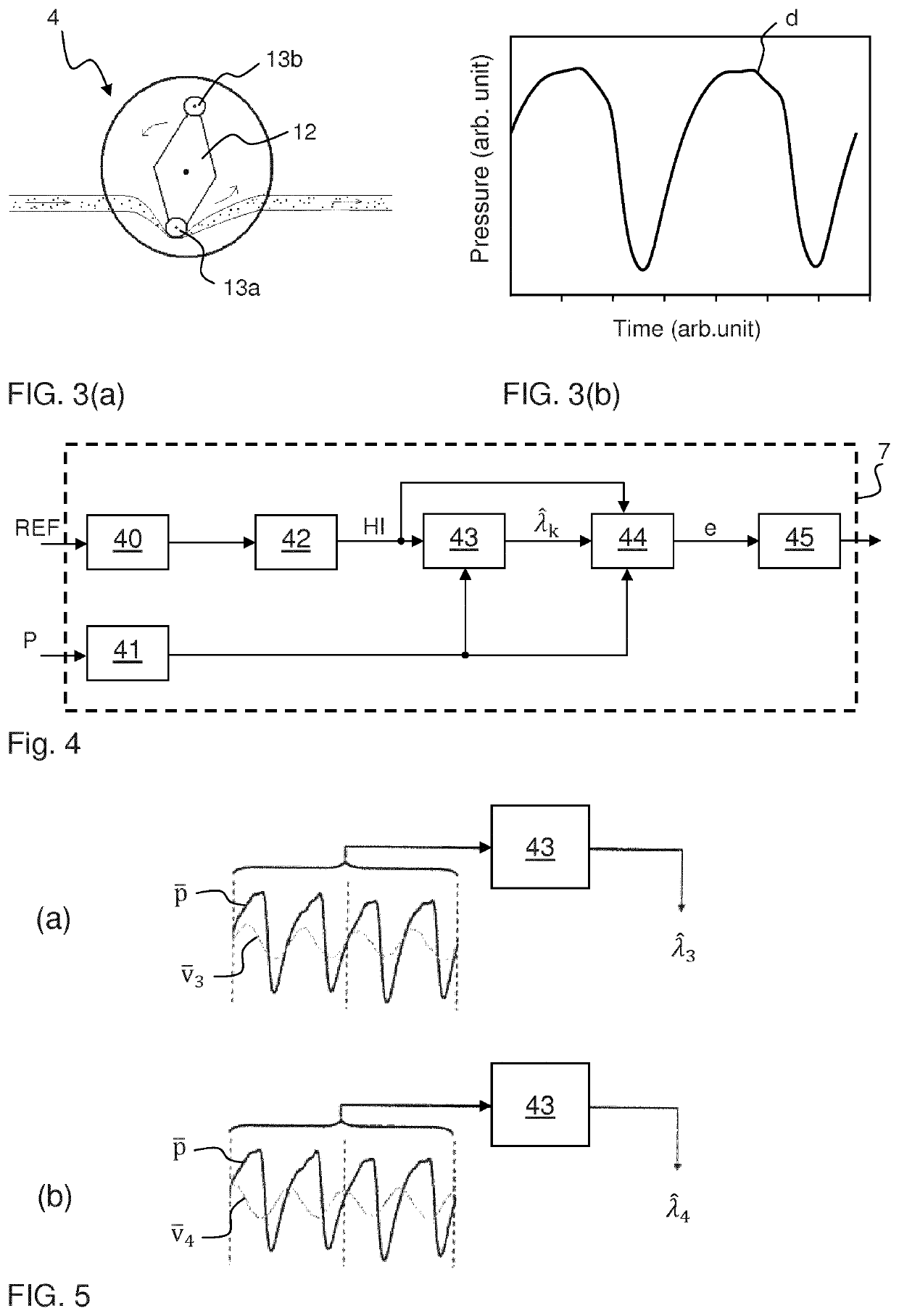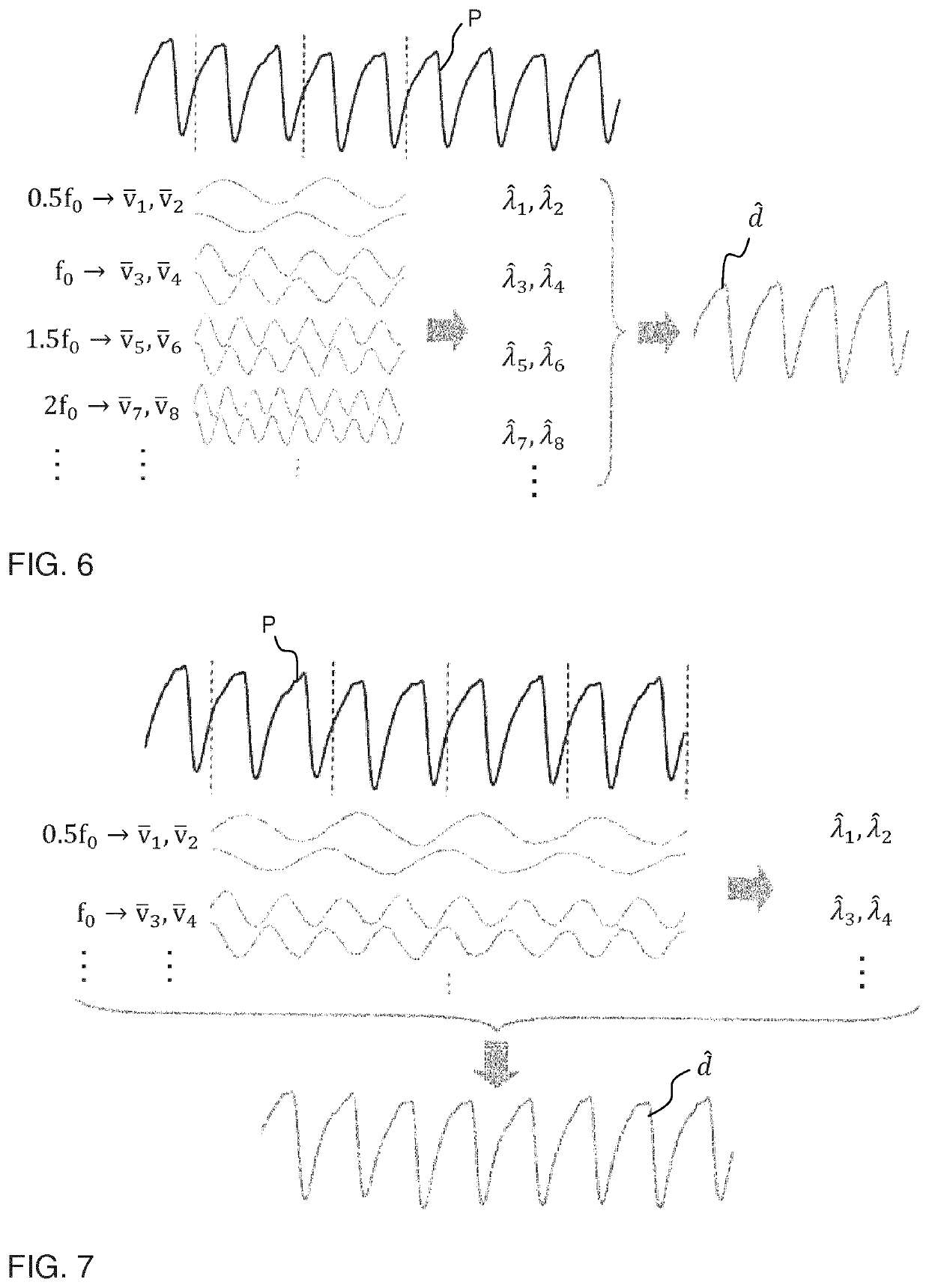Filtering of pressure signals for suppression of periodic pulses
a filtering and pressure signal technology, applied in the field of processing of pressure signals, can solve the problems of difficult to properly remove e.g. pump pulses, difficult to achieve the effect of properly removing e.g. pump pulses, and efficient implementation
- Summary
- Abstract
- Description
- Claims
- Application Information
AI Technical Summary
Benefits of technology
Problems solved by technology
Method used
Image
Examples
Embodiment Construction
[0051]Throughout the description, the same reference numerals are used to identify corresponding elements.
[0052]FIG. 1 illustrates a human subject which is connected to an extracorporeal fluid circuit 1 by way of access devices 2′, 2″ inserted into a dedicated vascular access 3 (also known as “blood vessel access”) on the subject. The extracorporeal fluid circuit 1 (denoted “EC circuit” in the following) is configured to communicate blood to and from the cardiovascular system of the subject. In one example, the EC circuit 1 is part of an apparatus for blood processing, such as a dialysis machine. In the illustrated example, a blood pump 4 draws blood from the vascular access 3 via access device 2′ and pumps the blood through a blood processing unit 5, e.g. a dialyzer, and back to the vascular access 3 via access device 2″. Thus, when both access devices 2′, 2″ are connected to the vascular access 3, the EC circuit 1 defines a blood path that starts and ends at the vascular access 3....
PUM
 Login to View More
Login to View More Abstract
Description
Claims
Application Information
 Login to View More
Login to View More - R&D
- Intellectual Property
- Life Sciences
- Materials
- Tech Scout
- Unparalleled Data Quality
- Higher Quality Content
- 60% Fewer Hallucinations
Browse by: Latest US Patents, China's latest patents, Technical Efficacy Thesaurus, Application Domain, Technology Topic, Popular Technical Reports.
© 2025 PatSnap. All rights reserved.Legal|Privacy policy|Modern Slavery Act Transparency Statement|Sitemap|About US| Contact US: help@patsnap.com



